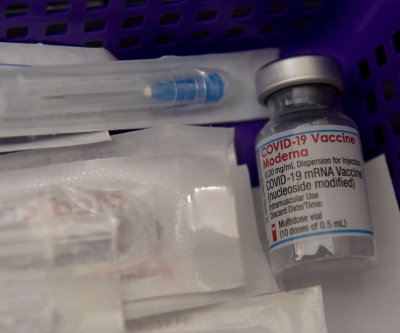FDA Approves Updated Moderna COVID-19 Vaccine for High-Risk Populations
On May 31, 2023, the U.S. Food and Drug Administration (FDA) granted approval for Moderna’s latest COVID-19 vaccine formulation, marking a significant step in ongoing efforts to combat the virus amid evolving variants. This new vaccine, known as mNEXSPIKE, is designed to bolster immunity among vulnerable groups, particularly older adults and individuals with underlying health conditions.
Targeted Authorization for Vulnerable Demographics
The FDA’s approval permits administration of mNEXSPIKE to adults aged 65 and above, as well as individuals aged 12 to 64 who possess at least one health condition that heightens their risk of severe COVID-19 illness. Prior vaccination history remains a prerequisite for recipients, ensuring that the vaccine is used as a booster rather than a primary series. This strategic move aims to enhance protection for those most susceptible to serious outcomes from the virus.
Anticipated Availability and Production Plans
According to Moderna, headquartered in Cambridge, Massachusetts, the company anticipates having sufficient supplies of mNEXSPIKE for the upcoming 2025-2026 respiratory virus season. The firm’s portfolio also includes Spikevax, the original COVID-19 vaccine, and mRESVIA, which targets respiratory syncytial virus (RSV), a common cause of respiratory illness in infants and older adults.
Implications for Public Health and Pandemic Response
Stéphane Bancel, Moderna’s CEO, emphasized the importance of this new vaccine in the broader context of public health. “The approval of mNEXSPIKE adds a vital tool to our arsenal against COVID-19, especially for those at heightened risk of severe disease,” he stated. “Despite significant progress, COVID-19 remains a serious threat, with over 47,000 American lives lost last year alone. We are grateful for the FDA’s prompt review and remain committed to supporting public health initiatives.”
Innovative Vaccine Technology and Clinical Trial Outcomes
According to STAT, mNEXSPIKE employs a sophisticated approach targeting specific viral components to stimulate an immune response. Notably, the dosage is approximately 20% of the amount used in Spikevax, reflecting advancements in vaccine efficiency. Moderna conducted a large-scale, randomized, observer-blind Phase 3 trial involving roughly 11,400 participants aged 12 and older. The study aimed to evaluate the vaccine’s effectiveness against COVID-19, starting 14 days post-vaccination, in comparison to the existing Spikevax.
Enhanced Efficacy and Safety Profile
The trial results demonstrated that mNEXSPIKE provided a 9.3% higher relative efficacy than the previous mRNA-1273 vaccine in individuals aged 12 and above. Among seniors aged 65 and older, the vaccine’s effectiveness increased by 13.5%. Common side effects reported included injection site pain, fatigue, headaches, and muscle aches, aligning with typical vaccine reactions. The FDA also highlighted a very small risk of severe allergic reactions occurring within an hour of vaccination.
Potential Risks and Ongoing Monitoring
While generally safe, mRNA COVID-19 vaccines, including Moderna’s, have been associated with rare cases of myocarditis and pericarditis, primarily observed in males aged 12 to 24. Moderna acknowledged these risks and emphasized the importance of continued surveillance. The FDA has mandated post-approval studies to monitor long-term safety and effectiveness, including investigations into vaccine impacts during pregnancy, with results expected by 2032.
Historical Context and Regulatory Milestones
Emergency use authorizations for COVID-19 vaccines began in December 2020, with Pfizer-BioNTech’s vaccine leading the initial rollout, followed shortly by Moderna. The first cases of COVID-19 in the U.S. were reported in January 2020. Since then, vaccination efforts have expanded to include children as young as six months, with ongoing updates to immunization guidelines based on emerging data.
Recent Policy Changes and Public Health Recommendations
Recently, the CDC revised its childhood immunization schedule, indicating that healthy children without underlying health issues may now receive COVID-19 vaccines, a shift from earlier cautious recommendations. This change comes amid ongoing debates and policy adjustments, including statements from the Department of Health and Human Services, which has clarified that vaccination remains a key component of pandemic mitigation strategies.
Vaccination Rates and Future Outlook
As of April 2023, approximately 23% of U.S. adults are fully vaccinated against COVID-19, with higher coverage among older populations. Among children aged 6 months to 18 years, vaccination rates are estimated at around 13%. The continued development and approval of updated vaccines like mNEXSPIKE are crucial in maintaining immunity, especially as new variants emerge and the virus persists as a public health challenge.
Broader Pandemic Preparedness and Vaccine Development
In addition to COVID-19, the U.S. government has invested heavily in developing vaccines for potential future pandemics, including influenza strains like H5N1 bird flu. Recently, HHS announced the cancellation of a $766 million contract with Moderna for flu vaccine development, redirecting resources to other pandemic preparedness initiatives. These efforts underscore the importance of adaptable vaccine platforms in safeguarding public health against unpredictable viral threats.

